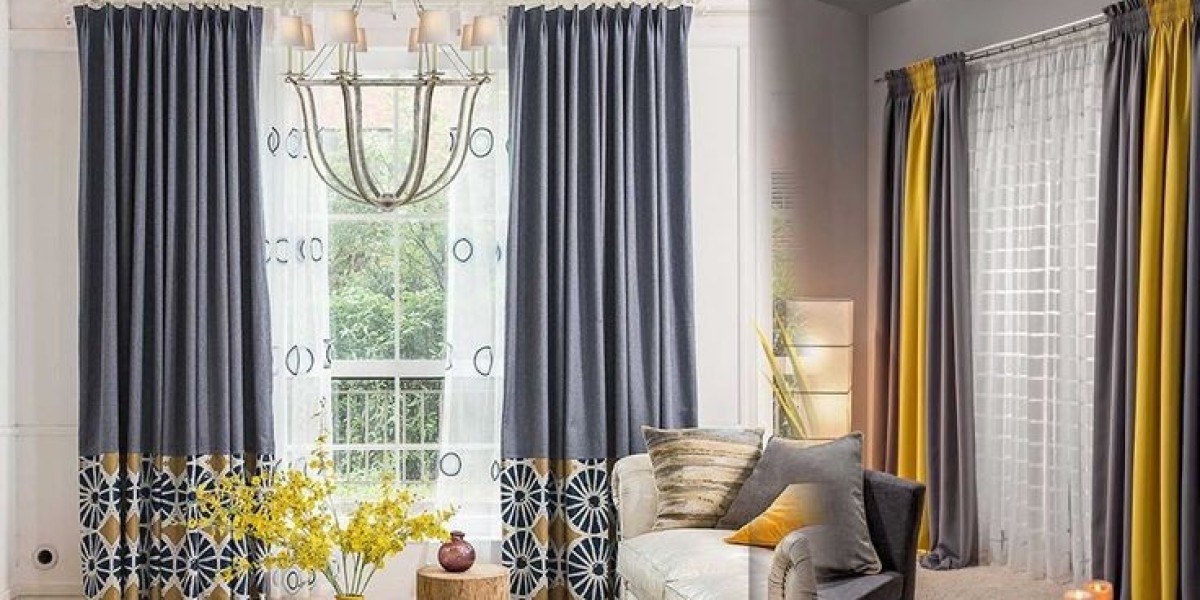Are you wondering if it's acceptable to have identical curtains in each room in your home?
We all want our home design to look cohesive and put together, but is there an advantage to taking a more varied approach to matching each room's style and functionality?
In this post, we look at the benefits and drawbacks of having the same window treatments in each room. We'll also go over some practical strategies for creating a unified appearance in your house, as well as some of the most crucial considerations when choosing living room curtains.
Let's consider whether uniformity or variety is the key to your ideal window look.
Pros and cons of using the same curtains in each room
When it comes to using the same curtains in every area of your home, there are pros and cons to consider. Let's look at all sides of the equation so you can make an informed conclusion.
Advantages:
Simplifies the design process: Choosing identical curtains streamlines the design process, so you won't have to spend hours selecting various window coverings for every room. It's a quick and easy solution, especially if you desire a consistent and uniform appearance throughout your home.
creates a sense of harmony. Using the same drapes in each room ensures visual continuity. It may connect the many areas of your home, giving it a sense of coherence and balance. This method can be especially useful in open-concept settings or homes with a continuous flow between rooms.
Makes maintenance easier: When all of your rooms have the same curtains, upkeep is more efficient. You can develop a cleaning and maintenance regimen without having to memorize the individual care instructions for different types of window treatments, which saves time and work in the long run.
Disadvantages:
Limits room customization: Using the same curtains throughout your home may limit your ability to personalize each space. Different spaces have distinct uses, fashions, and lighting requirements, and customizing your window treatments can enhance the overall mood and functionality. Choosing the same curtains may limit your ability to exhibit your style in different rooms.
Can be a little boring. While a uniform style can be visually pleasing, relying only on the same curtains may make things feel too predictable. Your home may lack the variety and visual appeal that diverse window treatments can provide.
It is possible that not all functionality boxes will be checked. Some rooms may require specific window treatments to satisfy their individual needs. For example, a bedroom may benefit from blackout curtains to improve sleep, while a living room may require sheer curtains to maximize natural light. Using the same curtains may not meet these different demands and tastes.
By considering the benefits and drawbacks, you'll be able to determine whether having the same curtains in every room is in line with your home design goals. If you adopt this strategy, there are a few key variables to consider and strategies to employ to create a unified and visually pleasing result.
I'm gazing out of a bedroom window that has curtains hanging on twin rails.
The owners of this Ngahinapouri residence combined and matched curtain fabrics to suit various spaces in their home.
Considerations to take into account when using the same curtains
While utilizing the same curtains in each room can create a unified effect, there are a few considerations to ensure that this technique is appropriate for your home's distinct style and needs.
How you use the space: Each room serves a different purpose and is positioned differently toward the sun. Consider whether the same sort of curtains can suit the functional needs of each room. For example, your emphasis in the bedrooms may be to create a darker sleeping environment, whereas in an office or TV room, you may be more concerned with reducing glare from the sun during the daytime.
Room size and ceiling height: Each room's dimensions have a significant impact on how uniform drapes appear in the space. Consider the room's size and ceiling height while choosing curtain lengths and hanging options. Adjusting the curtain length can help create a feeling of proportion and balance in each area.
Color and pattern selection: Your curtains' color and pattern have a significant impact on your home's overall appearance. Make sure your color and pattern choices suit the existing interior design strategy, which includes the wall colors, furniture, and décor components. Harmonizing the curtain color with the overall palette might result in a unified and appealing visual effect.
Fabric and texture: Experimenting with various fabric types and textures will give your curtains more depth and visual intrigue. Consider utilizing a variety of textiles to achieve subtle variances while maintaining a cohesive appearance. To provide contrast and tactile appeal, try combining smooth, flowing textiles with textured or patterned materials.
Architectural features: Take into account any distinctive architectural characteristics in your property. If you have bay windows, skylights, or arches, consider how the same curtains will interact with them. To meet these architectural factors, you may need to adjust your curtain choices or hanging techniques.
Overall Interior Design Style: Consider the general look and theme of your home's interior design. Is employing the same curtains consistent with your desired aesthetic? For example, if your home has a minimalist or modern style, identical curtains might highlight the clean lines and simplicity. In contrast, eclectic styles may benefit from a variety of curtains to add personality and intrigue.
By considering these variables, you'll be able to make an informed conclusion about whether utilizing the same curtains throughout is the best option for your home. Remember, the goal is to strike a balance between a coherent look and meeting each room's distinct needs and styles.
The home uses the same curtains in various rooms
Whitewood Homes opted to use the same Odin fabric curtains throughout this Cambridge home.
Tips for creating a unified look
If you've decided to use the same curtains in every room, here are some pointers to maintain a consistent and visually pleasing look:
Curtain length and fullness: To get a polished effect, ensure that the curtain length and fullness are constant throughout your home. To provide visual equilibrium, measure and hang drapes at the same height from the floor or ceiling in each room.
Experiment with fabric variations: Just because you use the same curtain style throughout does not imply your window coverings must be dull. Consider utilizing textured textiles to offer depth and tactile appeal, or choose the same fabric in a different color for other rooms in the house to add subtle diversity while being consistent
Use layers: Layering enhances the depth and diversity of your window treatments. For example, you could use the same sheer curtains throughout your home, but use double tracks in the bedrooms with a blockout lining, and roller blinds in the living areas.
Accents and decor: Strategically place furniture, artwork, and ornamental accents to create focal points and personalize each area. Uniform curtains give you plenty of space to add statement pieces elsewhere in the room.
Coordinate colors and patterns: Coordinating curtain colors and patterns with your current décor will help to tie spaces together. Choose a color that complements or matches the dominant hues in your decor, and opt for patterns that are consistent with your overall design theme to provide a smooth visual flow.
Unify with hardware and accessories. Use the same curtain tracks or rods, finials, tiebacks, and other hardware throughout your home. Choose a finish or style that complements your curtain design and overall decor.
Creating a coherent style necessitates meticulous attention to detail and smart execution. By following these guidelines, you may create a harmonious setting in which the curtains connect the rooms while retaining individuality and functionality in each.
Conclusion
To summarize, there is no 'one size fits all' strategy. The decision to use the same curtains in each room is based on your own preferences, your home's specific needs, and your desired style.
Choosing matching curtains simplifies the design process, allows for easy maintenance, and offers a cohesive and consistent appearance across your home. However, it limits room customization and may produce a boring appearance. Furthermore, some areas may require distinct window treatments to satisfy their specific requirements.








